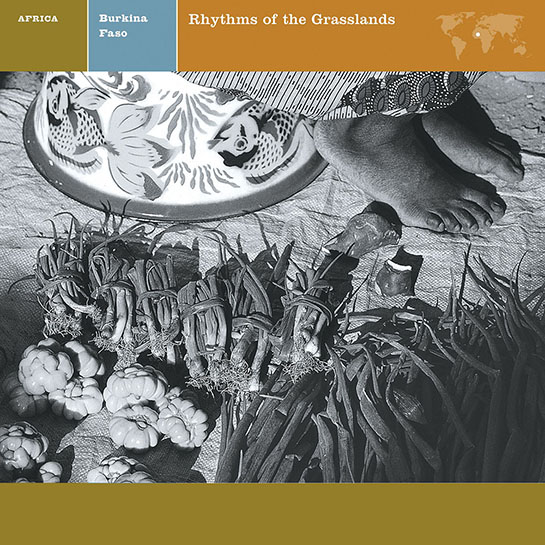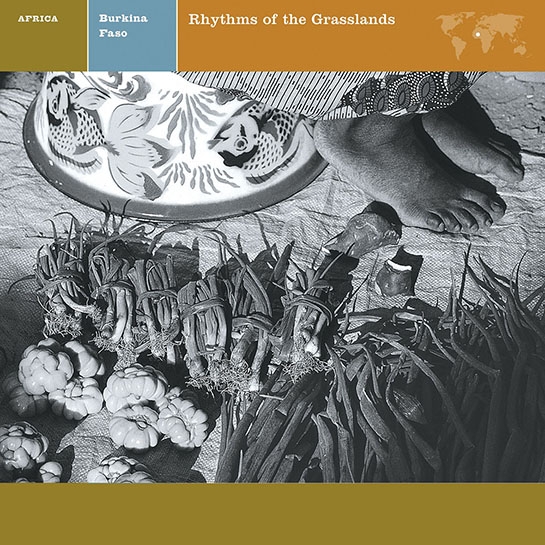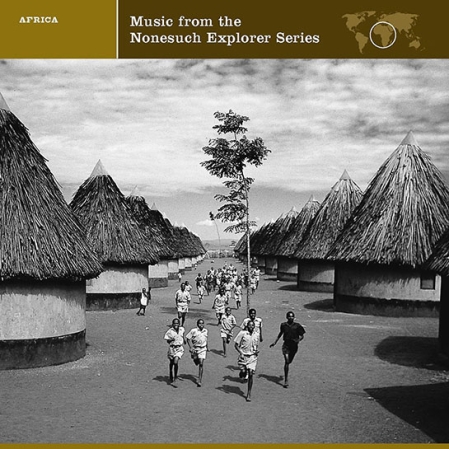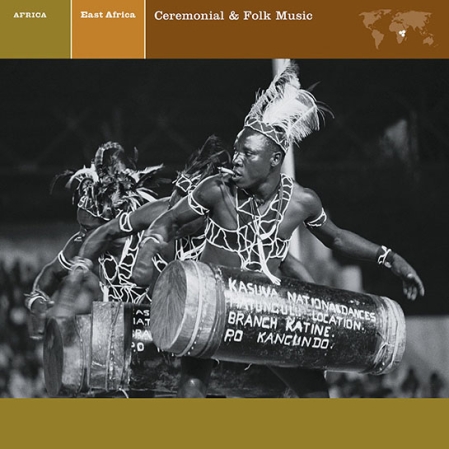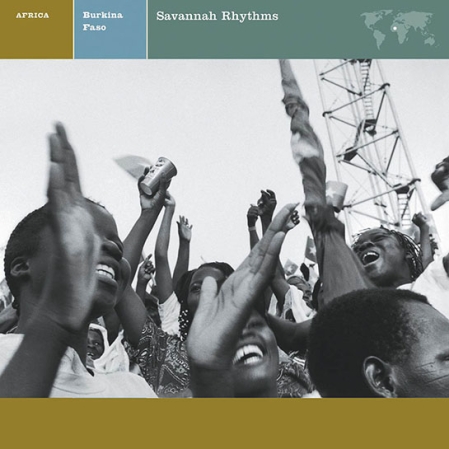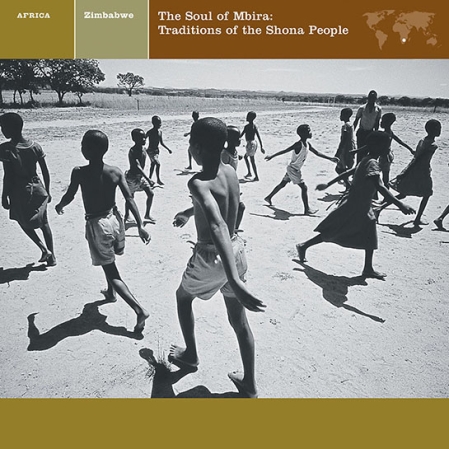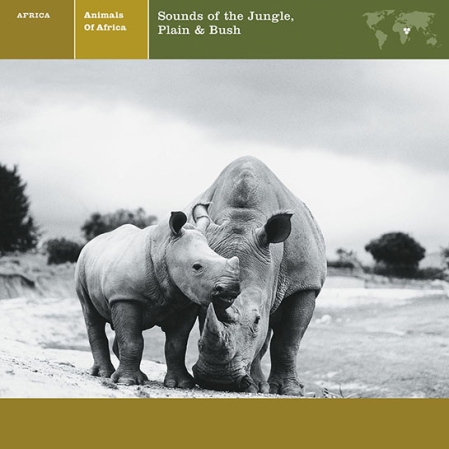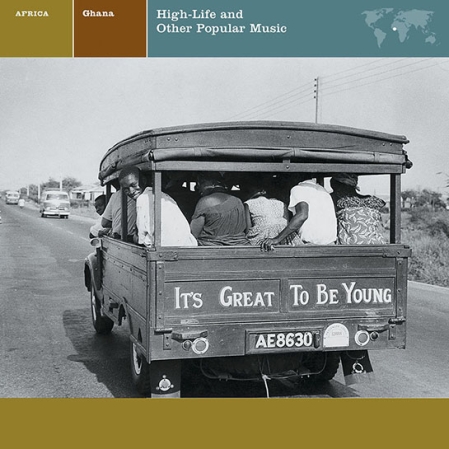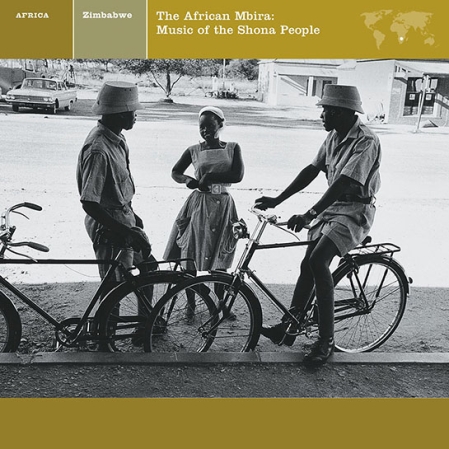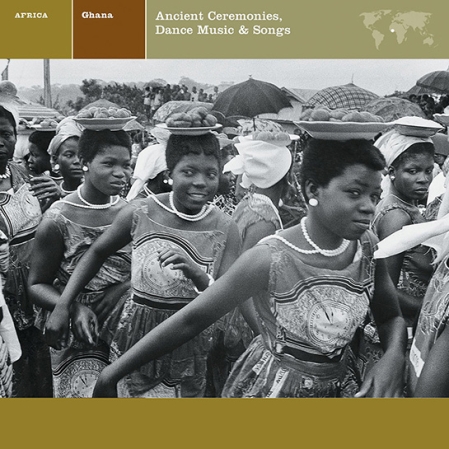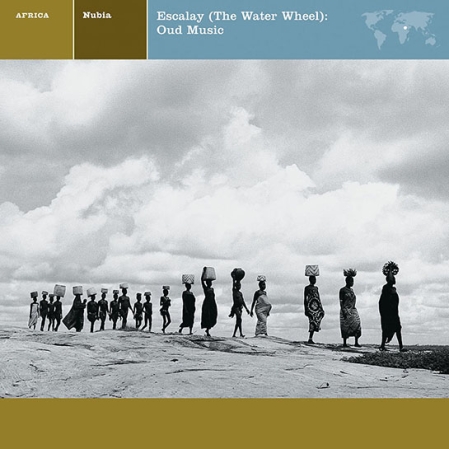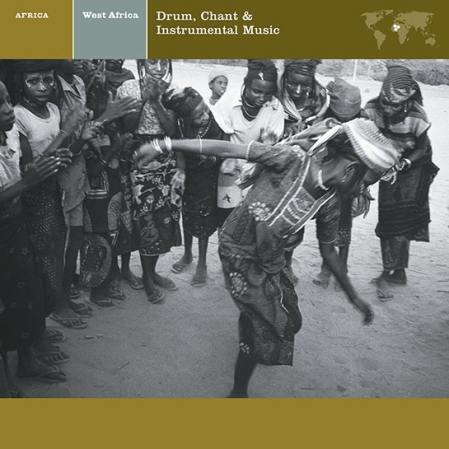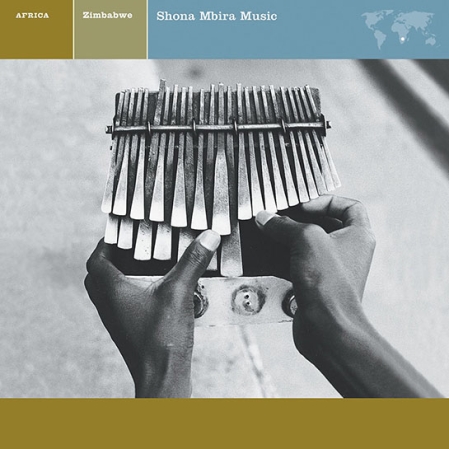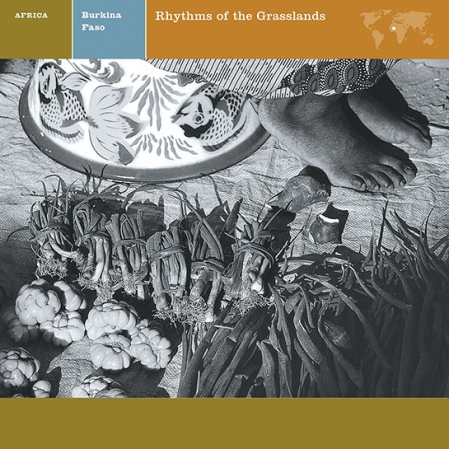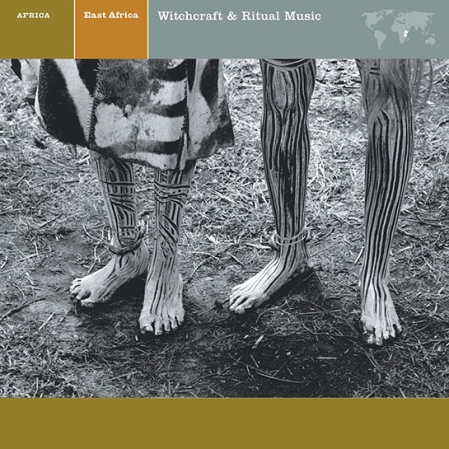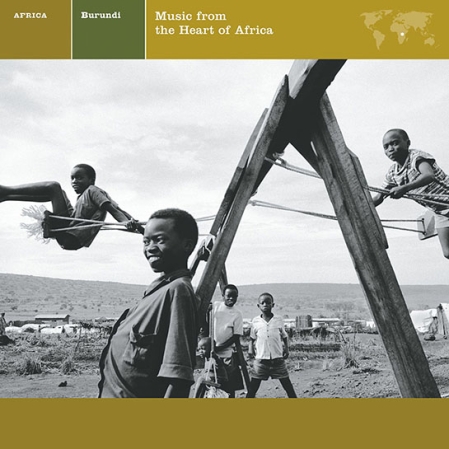This album showcases an area strong in drumming traditions in songs of the court and religious occasions, with cylindrical wood, spherical gourd, and pressure drums, plus harp-lutes, fiddles, flutes, and xylophones, reflecting Islamic influences from across the Sahara.
Originally released in 1983 as Rhythms of the Grasslands: Music of Upper Volta, Volume II
In order to provide a historical context for this recording, the liner notes that accompanied its original release have been reprinted in full below. The text has not been edited to reflect changes in general cultural perceptions or specific factual information that may have occurred since then.
A series of military coups in the late 1970s and early 1980s led to the rise of Captain Thomas Sankara as the leader of Upper Volta in 1983. A Marxist, Sankara worked towards domestic social and economic reform. At the same time, he severed connections to his country’s colonial past by aligning with Communist states abroad. Furthermore, in 1984, the name Upper Volta was shed in favor of Burkina Faso, which, through a combination of words in two of the country’s main languages, means “the land of incorruptible/upright men.”
Sankara was assassinated in 1987, allowing his closest ally, Captain Blaise Compaoré, to seize control. Through single- and multi-party elections in the 1990s, Compaoré and his party have maintained control of the government ever since. They have worked to reverse the trends set by his predecessor, seeking the assistance of the World Bank and the international community at large.
—Ed.
Upper Volta’s 105,869 square miles of semi-desert savannah plains in the heart of West Africa contain nearly six million people divided into over 50 distinct ethnic groups, speaking as many an languages. Centuries of traditional farming and nomadic cattle herding have provided the people with the expertise to subsist on marginal resources, and left them with a heritage of survival in a harsh environment. This album presents samples of the music of Upper Volta from several converging perspectives: cultural, musical, and social.
Upper Volta may be divided into three major cultural areas reflecting general differences in lifestyle, customs, language and music. The Voltaic area, in the central and eastern part of the country, is the largest. The country’s three million Mossi live there. Musical traditions reflect both the indigenous religious contexts and the court music sustaining the prestige of prominent political lineages.
Musically speaking, this area is strong in drumming traditions, including cylindrical wood and spherical gourd and pressure drums, the tone of which may be altered by squeezing or releasing the strings that connect the heads stretched over the ends of the hour-glass-shaped body. Solo lute and fiddle music also occur, as do ensembles of oblique flutes. Xylophones are found in the western Voltaic cultural area.
In the northern Sahel region the music traditions of nomadic herding groups such as the Fulani, Bella and Toureg are heard. The instruments are light and portable and may have other practical uses. Hand clapping with bracelets also provides rhythmic accompaniment. Other instruments include lutes, fiddles, transverse and oblique end-blown flutes, but drums are rarely found here. The music reflects Islamic influences from North Africa carried across the Sahara with the trade caravans.
The Mandé cultural area of western Upper Volta comprises the eastern extension of a larger Mandé cultural area that spreads westward across West Africa through southern Mali, Northern Sierra Leone, and into northern Guinea, Gambia and Senegal. The origins of this large cultural grouping trace back to the Mali Empire of the 14th century. Instruments that are common in this area include harp-lutes, fiddles, lutes, xylophones, musical bows and conical, cylindrical, and pressure drum ensembles. More emphasis is placed on solo singing.
- KATHLEEN JOHNSON, 1983
PRODUCTION CREDITS
Recorded 1973–75 in Upper Volta by Kathleen Johnson
Editing: John Howell, Library of Congress
Mastered by Michele Stone, Elektra Sound Recorders
Production Coordinator: Elise Keen
Director: Keith Holzman
Re-mastered by Robert C. Ludwig at Gateway Mastering Studios, Portland, ME
Design by Doyle Partners
Photography by Magnum Photos
79713
